Q&A – Ask Neil: September 5, 2024
(Please read these instructions carefully.)
Before you post your question, please look at recent issues to see if someone else has already asked it. You might find your answer there.
How to submit your question…
(Note: You may need to allow a pop-up window to come up in order to get the link for sending your photo(s). If you have already submitted your question and didn’t see the pop-up window, please click here.)
• Click the link provided below to post your question. After you submit your question, a new window will pop up giving you the address to which you can e-mail a SHARP, HIGH-RESOLUTION PHOTO to accompany your question. Please DO NOT SEND THUMBNAIL PHOTOS in case I need to zoom in to see things.
• Click here to post your question.
• Please ONLY POST YOUR QUESTION ONE TIME. We can only accept a set number of questions each week, and when we get duplicates it costs other people their chances.
• One question per reader, please.
• Please use this only for posting questions – not for standard emails.
• Watch for your answer in the following week’s e-gardens.
• I choose those of greatest general interest. For example, plant IDs seldom make the cut.
• I must have your first name or initials.
• I must have your city or county. (Texas is a very large state.)
QUESTION 1
WHAT WAS THE NAME OF THE PLANT IN YOUR FEATURE LAST WEEK?
Question: I didn’t see the name of your featured plant last week in the story. What was the plant? (Several people wrote to ask.)
Answer: Well, oops. Sorry about that. I had named it in the tease on the Table of Contents page, but vertigo got the best of me as I was writing and proofing and I missed putting it into the story. Gretchen added it into the archived story over the weekend so it’s there now. For those who are still wondering: Flame acanthus or flame anisacanthus, Anisacanthus quadrifidus var. wrightii. If you missed the story, here is a link back to it.
QUESTION 2
WHAT IS A GOOD RABBIT-PROOF SCREENING EVERGREEN PRIVACY HEDGE?
Question: What do you recommend for a full sun, evergreen hedge that is relatively rabbit proof? We’ve tried Burford hollies and Chinese hollies, but the rabbits still came. It’s a communal area maintained by a landscape company. Jo D., Frisco.
Answer: Our son lives in far West McKinney, one block away from your city, so his rabbits probably know your rabbits. After the February 2021 extreme cold we replanted the front of his house with many dwarf hollies and he experienced the same thing – the rabbits fed on the new spring growth, most notably of the dwarf Burford hollies. I was amazed. He put chicken wire cages around the plants long enough to let the foliage become leathery and the rabbits left them alone from that point forward.
I do have another question, however. The two plants you mentioned are almost never sold in their standard (non-dwarf) forms. I’m assuming you were planting dwarf Burford and dwarf Chinese hollies. Those won’t give you much privacy. It sounds to me like you would need the much taller Willowleaf, Oakland, or Nellie R. Stevens hollies. The chicken wire fencing is still a good idea for them as well. (Short-term basis, and it only has to come up 18 inches around the plants. It’s not especially noticeable, either.)
QUESTION 3
HOW CAN WE GET RID OF ALL OUR “LITTLE BRADFORDS?”
Question: Our Bradford pears fell several years ago due to strong winds. We had it removed and the trunk was cut down flush with the soil. Now we have what appears to be little Bradfords popping up I assume from the roots. How can I get rid of them? John C., Tarrant County.
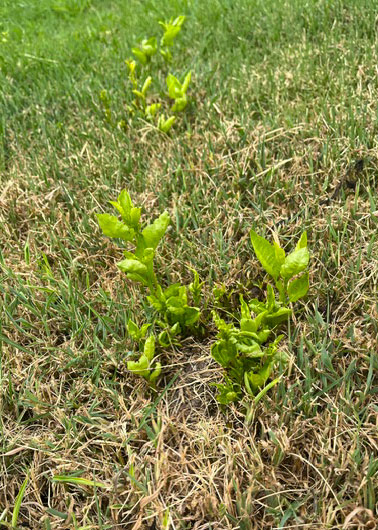
Answer: Those are sprouts coming up from the roots of the rootstock of the old Bradford. They’re Callery pears, and they will continue to sprout up for a couple more years. Keeping them mowed off will eventually discourage them, although you can speed it along using a sharpshooter spade to sever them when the soils are wet. A broadleafed weedkiller spray might help, but I suspect that the sprouts will always be too small and their mother root will always be too big and woody to get enough spray into the foliage to do a thorough job of killing all the sprouts. Time, mowing, and digging are your best ways. (Everything I have written is based on personal experience in my own landscape about 30 years ago. That was how I was learning the painful truth of Bradford pears.)
QUESTION 4
WHY WOULD MY BEGONIAS NOT HAVE DONE WELL?
Question: For the past two summers my begonias have not done well. If I mix in peat moss in fall and spring, will that help whatever is in the soil? I bought them at Callaway’s. Robin W., Plano.
Answer: Callaway’s is outstanding. That’s where I buy my begonias as well.
Start with vigorous plants growing in roughly the same amount of light you will be giving them.
It’s best to plant them before it turns really hot if you’re going to be planting them directly into garden beds. For Plano I would suggest before the end of April. Morning sun with afternoon shade is ideal if you’re planting bronze-leafed types – even less sun if you’re growing green-leafed varieties.
As for the soil, the way you phrased your question it sounded like you were trying to control some kind of disease in the soil with the peat moss. That only works for Take All Root Rot fungus on St. Augustine. It does not translate to any other soil-borne fungus as far as I know.
Wax begonias certainly do benefit from the very best bed preparation you can give any annual flower you grow. I prefer to mix about 2 inches of sphagnum peat moss, 1 inch of compost, 1 inch of finely ground pine bark mulch, and 1 inch of rotted cow manure, along with 1 inch of expanded shale into the top foot of garden soil. That gives a consistency almost like potting soil.
Water your begonias in the evenings and keep moisture off the leaves whenever the sun is hitting the foliage. Apply a high-nitrogen, water-soluble plant food each time that you water them.
QUESTION 5
WHAT IS YOUR FAVORITE FAST-GROWING SMALL TREE?
Question: We lost our ornamental pear in a May thunderstorm. We want to replant with a tree that will stay small but grow quickly. I’m all about crape myrtles, but my husband is not. What is your favorite? Kathi R., Wylie.
Answer: I just love these domestic “discussions.” OK. So, the problem with fast growth is that most trees that grow rapidly don’t know when to stop. They get big. Let me tell you the best small accent trees and then we’ll talk a bit more.
Best of them all is Little Gem southern magnolia. It’s half-sized in all respects compared to the East Texas native version of this wonderful tree. But it’s a slow grower, so you’d need to buy a larger specimen initially. It’s evergreen, of course, and it does have the same growth form as the Bradford pear had.
Other good small to mid-sized trees include redbuds, Mexican plums, golden raintrees, and ginkgoes.
Large hollies are excellent, most notably yaupon, Warren’s Red possumhaw, and Nellie R. Stevens. All are available trained in tree form with 1 or 3 trunks. All three types grow tall and wide enough to make excellent small trees in a landscape. They would not look proper in a large landscape taking the place of a regular shade tree, however.
Taller crape myrtles trained with 3 or 5 trunks into tree forms make lovely accent trees at the corners of houses, lining driveways, etc. However, as a yard tree they may not command respect as shade trees. My personal favorites: Catawba (purple), Sarah’s Favorite White or Glendora White (whites), or Red Rocket or Dynamite (reds).
QUESTION 6
SHOULD I PRUNE MY FLOWERING QUINCES NOW?
Question: I know I should prune flowering quinces after they bloom in the early spring, but they’re so lanky now. If I prune them now, will I ruin next spring’s blooms? They flower beautifully every spring. (They are dry – tomorrow is watering day.)
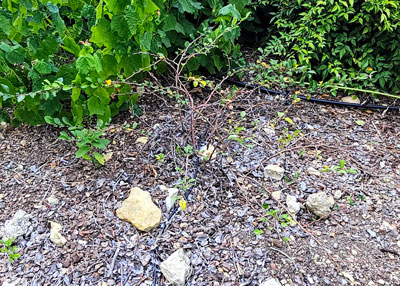
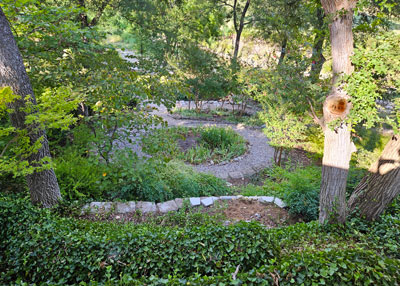
Answer: I’ve always said that nothing is more beautiful than a flowering quince when it’s in full flower, and nothing is uglier than a flowering quince by late summer. (I rest my case.)
Since you said your plants always bloom beautifully, I’d leave well enough alone. Pray for rain and get supplemental water to them as best you can. They are getting ready to set their buds for next spring. You would really impact next year’s flower count if you starting trimming them now.
QUESTION 7
WHAT IS YOUR OPINION OF DIATOMACEOUS EARTH?
Question: What is your opinion about diatomaceous earth? Our backyard backs up to a green space/city park. We get a lot of rabbits and insects through our metal fencing. It was suggested that I mix diatomaceous earth in the bed around my tree where my tomato plants are growing to help with the insect population. Would this work? Will it harm our maple tree? C.N., No city given.
Answer: Diatomaceous earth is highly touted by many organic gardening proponents, but I fear that they have greatly expanded whatever uses have been found for it. It’s a dust-like powder that is abrasive to the exoskeletons of certain types of insects, but I hear it being recommended by people who I believe are not entomologists for all kinds of other pests. I just spent 30 minutes online looking for any university entomology department that would give me instructions on which insects it would control and how I should use it – some types of information to which I could provide you links. To my surprise, I found nothing but home remedies and blogs.
I have never recommended DE as my frontline defense against any particular insect problem when people have called or written me, certainly not for anything that might be bothering tomatoes through their soil. I’m a “No” on this one.
QUESTION 8
WHAT IS THE LIFE SPAN OF A BOX ELDER TREE?
Question: I’m concerned about the life expectancy of a box elder tree. How vulnerable is my roof? Kathleen P., Livingston.
Answer: Box elders are maples (Acer negundo). As such, they’re not the best shade trees one could choose for Texas, but they do live a fairly long time, especially in East Texas. I’m not a certified arborist, but I’ve been around a long time watching them. I’d guess their life spans to be 60-80 years. However, the individual tree itself will be a better guide. If it’s still vigorous and putting on good new growth each spring, it should be fine. Keep an eye on all its major branches. If any one of them starts to fail, that might suggest a problem in the trunk on that side. It would probably be a good idea to start a search for a nursery professional or forester to look in on the tree every two or three years just to be sure.
QUESTION 9
WHAT IS HAPPENING TO THE BASE OF MY CRAPE MYRTLE?
Question: Something is eating away at the base of my crape myrtle’s trunk, or it is rotting. It’s 29 years old. I see no powdery mildew, black mold, or aphids. Cathy P., Dallas.
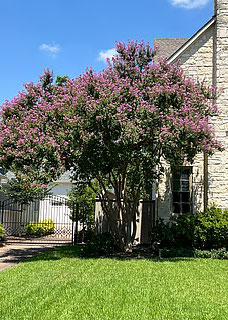
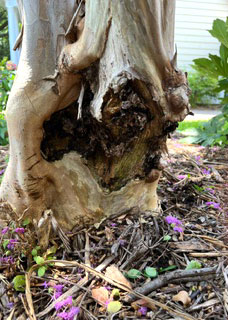
Answer: That’s a lovely crape myrtle, and I can see why you’re concerned. You are correct that it is decaying. It looks like there probably was line trimmer damage done to it many years ago that set the decay in motion. Either that or it was hit by the head of a hoe or other tool. If it were mine, I would probably not do anything to scrape out the decay, but I might spray a fungicide onto the wounded area. Your hope is that it will form new bark across that wound and eventually heal itself. It will take several years, but crape myrtles do have that ability. The good news (I guess) is that if all else fails and the plant loses that trunk, crape myrtles are always eager to send up new shoots. Those new shoots quickly develop into new trunks and take over the form and good looks of the tree.
QUESTION 10
WHY WOULD THE PRICKLY PEAR IN MY LANDSCAPE BE DYING?
Question: I have had a very attractive prickly pear cactus in my landscape for many years, but recently it has started dying. What would cause that? Heather, Weatherford.
Answer: Heather actually called my radio program last weekend. After I spoke with her, I told her I would need to do some research and reply to her question here. She assured me she would be sending photos of the plant to help me see the problem, but we did not receive them, so yesterday after striking out online, I reached out to several friends I thought might be able to help me.
Steven Chamblee, longtime friend and contributor here to e-gardens, lived and worked in Weatherford for many years. He said he felt the plant may have sustained a lower trunk injury that caused decay to move into its tissues. He was lamenting the need of a photo or two.
Dr. Larry Stein, leader in Extension Horticulture, spent many years in Stephenville and is now based in Uvalde. Larry felt it could be cold damage due to the recent several very cold winters. Some species of the genus Opuntia are less winter hardy than others and Weatherford got quite cold a couple of times. I have lost a spineless prickly pear to cold injury in McKinney in a past winter.
John Begnaud spent his entire career as county horticulturist in Tom Green County, San Angelo. John suggested that it may very well be Phyllosticta concave, a fungal spotting disease that causes the pads to dry out and die from the inside out. As I read that I realized that’s exactly what I’ve observed hundreds of times over. John said it’s common practice for ranchers in his area to take infected pads and toss them into otherwise healthy plants trying to infect them. Here is a link to information on cactus diseases on the Texas A&M Plant Pathology Plant Disease Handbook website.
Somehow, I was unable to find that page in my own searches until I had the fungal disease’s name.
Hope that helps.
